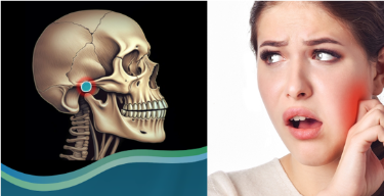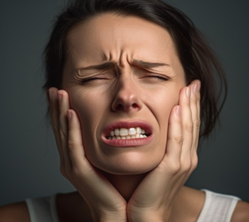 What is TMJ Dysfunction (TMD)?
What is TMJ Dysfunction (TMD)?
Your temporomandibular joint (TMJ) connects your jaw to your skull and allows you to speak, chew, yawn, and express emotion. It’s one of the most used and complex joints in the body.
When this joint or the muscles around it stop working smoothly, it can lead to TMD – Temporomandibular Dysfunction, which may cause:
- Jaw pain, clicking, or locking
- Headaches or migraines
- Pain while eating or talking
- Teeth clenching or grinding
- Ear symptoms (fullness, ringing, dizziness)
- Facial tightness or tenderness
- Neck and upper shoulder tension
TMD can be influenced by posture, injury, habits, stress, or even sleep quality — which is why a whole-person approach to treatment often brings the best results.
 Does This Sound Like You?
Does This Sound Like You?
If you’ve been dealing with jaw pain, headaches, clicking, or clenching… if you’ve tried splints, medication, or seen multiple health providers with little progress… you’re not alone, and there is help available. I offer a compassionate, evidence-informed approach that combines hands-on treatment, education, movement retraining, and nervous system support.
Let’s work together to figure out what’s driving your symptoms and create a clear, personalised plan for recovery.
Sunshine Coast Health Services – Buderim
Suite 8, Lakeshore Shopping Centre, 5–9 Lakeshore Avenue, Buderim QLD 4556
Phone: (07) 5363 0288
Email: gillian@schealthservices.com.au
Visit our blog to explore more about topics like:
- Tinnitus and its connection to TMD
- Breathing patterns and jaw tension
- The role of sleep in jaw pain and recovery
TMD Digial Brochure
 Please DOWNLOAD our TMD & Jaw Pain Guide, designed to help you better understand your symptoms and the holistic approach we take to managing TMD.
Please DOWNLOAD our TMD & Jaw Pain Guide, designed to help you better understand your symptoms and the holistic approach we take to managing TMD.
This brochure includes information about common symptoms, contributing factors, and how physiotherapy can support your recovery.
